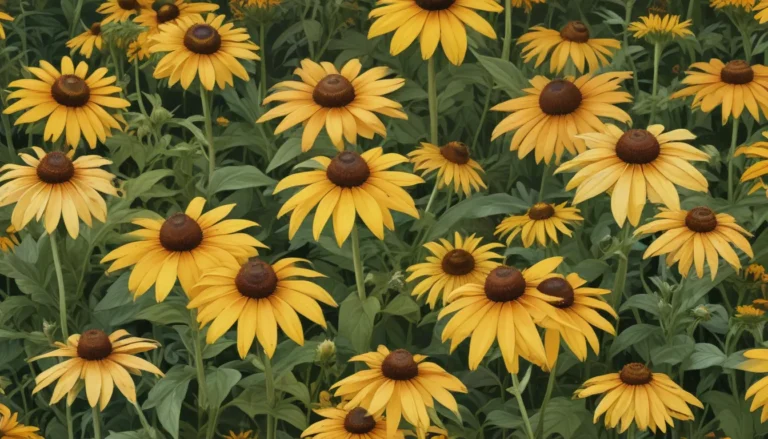The Complete Guide to Greenhouse Gardening: Everything You Need to Know to Get Started

So you’re considering delving into the world of greenhouse gardening – what a fantastic idea! Greenhouses offer a multitude of benefits, from allowing you to start seeds at any time to extending your growing season and providing the perfect environment for growing vegetables even in the winter.
In addition to these advantages, greenhouses protect your plants from pesky pests and offer the opportunity to grow species that may not thrive in your USDA Hardiness Zone. There are numerous reasons why having a greenhouse in your life could be a game-changer.
Before you fully commit to your greenhouse journey, it’s essential to understand the fundamentals of greenhouse gardening. In this all-encompassing guide, we’ll cover everything you need to know to get started, from the basics of greenhouse structures to the best practices for maintaining your plants. Let’s dive right in!
What You’ll Learn
Here’s a quick overview of what you can expect to learn in this guide:
- What Is a Greenhouse?
- Greenhouse Styles and Sizes
- What Can You Grow in a Greenhouse?
- Location
- Flooring and Foundation
- Equipment
- Climate Control
- Light and Water
- Managing Pests and Disease
Greenhouse gardening may seem daunting at first, but fear not – we’re here to guide you every step of the way. Let’s embark on this exciting journey together!
What Is a Greenhouse?
A greenhouse is a specialized structure designed to house plants and protect them from extreme temperatures, excessive sun exposure, and harsh weather conditions. Typically made of glass or clear plastic supported by various framing materials, greenhouses allow sunlight to enter while providing a controlled environment for plants to thrive.
While some argue that true greenhouses must have extensive climate control systems, even basic structures with minimal amenities can be considered greenhouses. Whether it’s a simple wooden frame covered with plastic or an elaborate glass-walled structure, the primary goal remains the same – providing a conducive environment for plant growth.
Greenhouse Styles and Sizes
Greenhouses come in a variety of shapes and sizes, ranging from compact structures to expansive glass-walled buildings. The most common styles include A-frame, shed, gambrel, and gabled roofs, each offering unique benefits for plant growth.
For those looking to maximize space, sunken styles such as walipini, pit, and Chinese greenhouses provide additional insulation and heat retention. Whether you opt for a traditional rectangular structure or a unique triangular design, the choice of greenhouse style depends on your gardening needs and available space.
When selecting a greenhouse, consider factors such as size, material, and features like ventilation, heating, and lighting. Beginners often start with pre-built structures or DIY options to get their feet wet in greenhouse gardening.
What Can You Grow in a Greenhouse?
One of the most exciting aspects of greenhouse gardening is the diverse range of plants you can cultivate. From herbs and vegetables to fruit trees and succulents, a greenhouse offers endless possibilities for gardeners of all skill levels.
Herbs are an excellent starting point for beginners, providing fresh ingredients for culinary delights while being relatively low-maintenance. Fruit trees, such as citrus varieties, thrive in the controlled environment of a greenhouse, allowing you to enjoy homegrown fruits year-round.
Succulents, known for their unique shapes and vibrant colors, are ideal for greenhouse cultivation, especially in regions with challenging climatic conditions. By leveraging the benefits of a greenhouse, you can explore a wide array of plant species and create a thriving garden oasis.
Location
Choosing the right location for your greenhouse is crucial to its long-term success. Opt for a spot with ample sunlight, preferably away from tall buildings or trees that may cast shadows on the structure. South-facing locations receive the most sunlight throughout the day, making them ideal for greenhouse placement.
Consider factors like wind protection, proximity to water and power sources, and ease of access when selecting a location. Whether you prefer a greenhouse close to your home or placed farther away for privacy, ensure the site offers optimal growing conditions for your plants.
Flooring and Foundation
Creating a solid foundation for your greenhouse is essential for its structural integrity and long-term durability. Depending on the size and weight of the structure, you may choose to set it directly on the ground or construct a foundation using materials like wood, concrete, or brick.
Leveling the ground and providing adequate drainage are critical steps in preparing the foundation for your greenhouse. While smaller structures may not require elaborate foundations, larger buildings benefit from footings, concrete slabs, or decking for added stability and insulation.
Selecting suitable flooring options, such as gravel, sand, or rubber mats, helps maintain a clean and organized environment inside the greenhouse. Flooring materials that resist moisture and provide adequate drainage are ideal for preventing weeds and mud accumulation.
Equipment
Equipping your greenhouse with the necessary tools and accessories enhances the gardening experience and promotes plant health. From shelving and seed labels to shading systems and irrigation supplies, investing in essential equipment streamlines your gardening tasks and maximizes space utilization.
Vertical growing solutions like trellises, shelves, and hanging baskets offer creative ways to maximize growing space and cultivate a diverse range of plants. Consider your specific gardening needs and preferences when selecting equipment to create a functional and efficient greenhouse environment.
Climate Control
Maintaining a stable climate inside the greenhouse is key to ensuring optimal plant growth and productivity. While some greenhouses rely on natural ventilation and sunlight, others benefit from advanced climate control systems that regulate temperature and humidity levels.
Heating options like electric heaters, solar panels, or geothermal systems are valuable for greenhouse owners in colder climates or those looking to extend the growing season. Alternatively, passive heating techniques like thermal mass storage and insulation help retain heat and reduce energy costs.
Ventilation, shading, and cooling methods play a crucial role in controlling temperature and airflow within the greenhouse. Consider investing in automatic vents, internal shade cloth, fans, and misting systems to create a comfortable and stable environment for your plants.
Light and Water
Provide adequate lighting and irrigation to support plant growth and ensure optimal conditions for greenhouse gardening success. While natural sunlight is sufficient for many plants, supplemental lighting with grow lights may be necessary for areas with limited sunlight or short daylight hours.
Selecting appropriate lighting fixtures and positioning them strategically in the greenhouse helps maximize plant exposure to light and promote healthy growth. Consider factors like plant species, light intensity, and seasonal variations when planning your lighting setup.
Efficient watering techniques, such as drip irrigation, soaker hoses, or overhead watering systems, deliver water directly to the roots and minimize moisture-related issues. Avoid wetting the foliage excessively and focus on watering the soil to prevent diseases and promote healthy plant growth.
Managing Pests and Disease
Greenhouses are susceptible to pest infestations and diseases due to the controlled environment and lack of natural predators. Common greenhouse pests like aphids, mealybugs, and spider mites can quickly multiply in the absence of proper management practices.
Preventative measures such as using clean soil, quarantining new plants, and maintaining plant hygiene help minimize the risk of pest and disease outbreaks. Regular monitoring, scouting, and early detection of problems enable prompt treatment and reduce the spread of pathogens.
Implementing integrated pest management (IPM) strategies, such as biological controls, organic pesticides, and cultural practices, effectively control pests and diseases while minimizing chemical inputs. By adopting sustainable and eco-friendly gardening practices, you can create a healthy and thriving greenhouse ecosystem.
Conclusion
In conclusion, greenhouse gardening offers a wealth of opportunities for plant enthusiasts to explore new species, extend their growing season, and create a thriving garden oasis. By understanding the essential elements of greenhouse gardening, from structure and equipment to climate control and plant care, you can embark on a rewarding and fulfilling gardening journey.
Whether you’re a beginner or seasoned gardener, greenhouse gardening provides a unique and enjoyable way to connect with nature, cultivate diverse plant species, and enjoy the fruits of your labor year-round. By following best practices, staying informed about new techniques, and adapting to the changing needs of your plants, you can create a thriving greenhouse garden that brings joy and satisfaction for years to come.
What will you be growing in your greenhouse? Share your plans, tips, and experiences in the comments below – we’d love to hear from you! Happy gardening!





